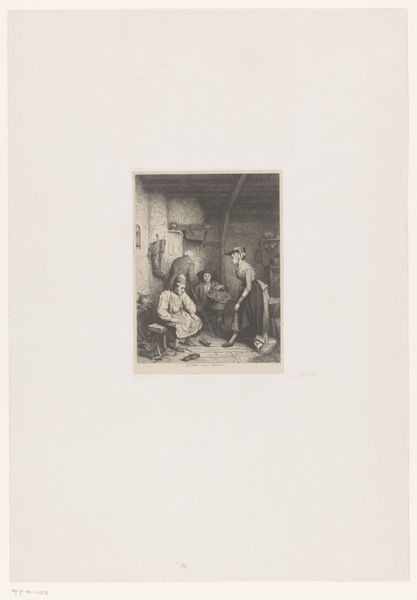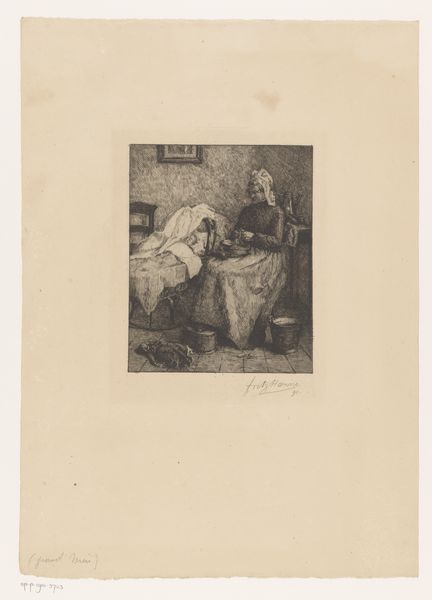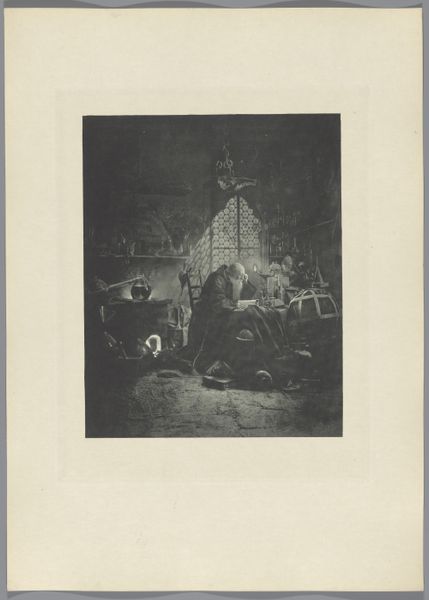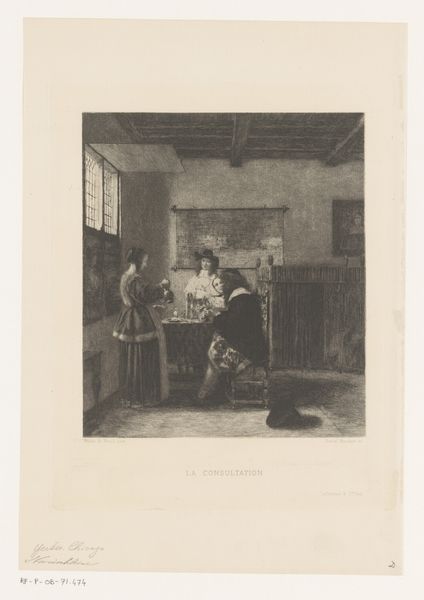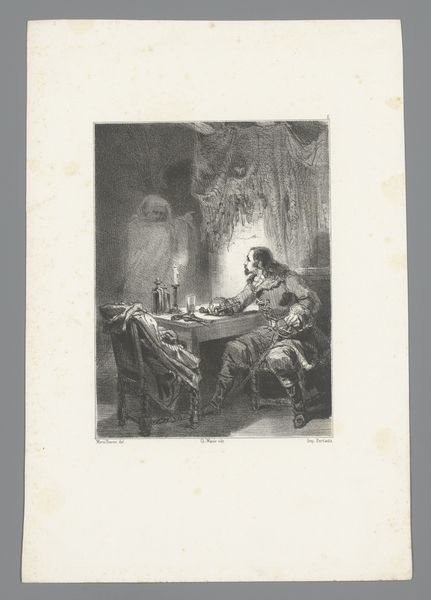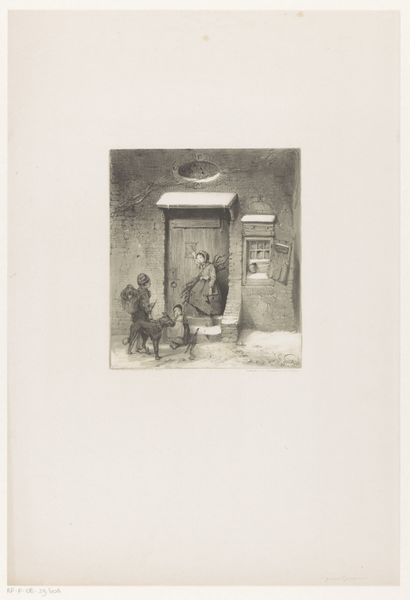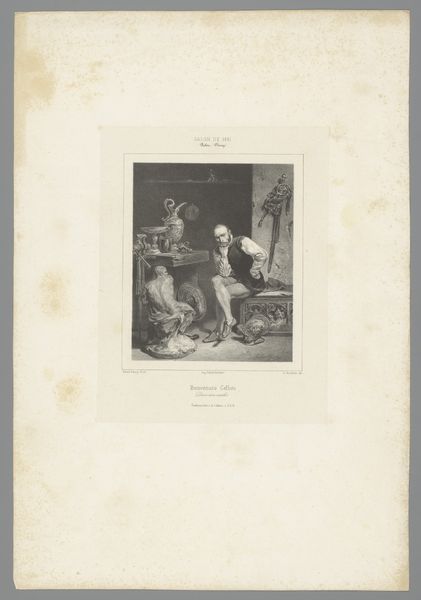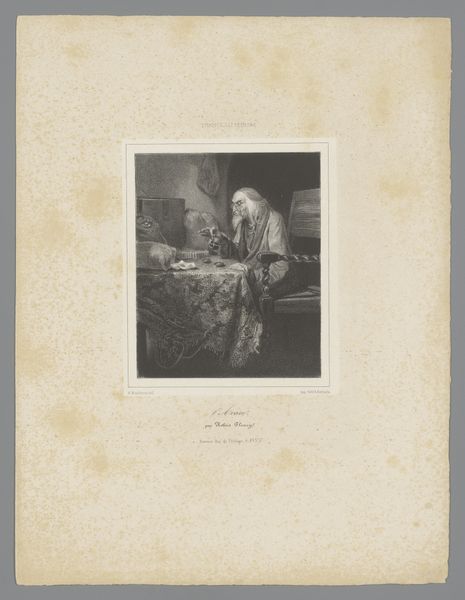
Dimensions: height 573 mm, width 461 mm
Copyright: Rijks Museum: Open Domain
Curator: Before us hangs an engraving titled "Oude man speelt zijn fluit voor zijn vrouw," which translates to "Old man plays his flute for his wife," created sometime between 1837 and 1904 by Fritz Dinger. Editor: My first impression is of stark contrast and intimate interiority. The tonal range creates an almost photographic realism, capturing a tender moment. There’s something profoundly moving in its simplicity. Curator: Precisely! Notice the arrangement of the figures within the composition. The man, standing to the left, forms a vertical element balanced by the seated woman to the right. This binary structure could suggest a life in tandem. The lighting, though limited, highlights the expressions on their faces, conveying both his dedication and her peaceful reception. Editor: Absolutely, but it’s more than a sentimental scene, I think. The presence of the text “Ein Lied aus alter Zeit” below the figures places it within a historical and social context. The work taps into nostalgia and an idealized past, likely responding to the rapid social changes in 19th-century Germany, particularly the industrial revolution. The work may depict an ideal of simpler domestic lives, which served a public function, potentially comforting or even provocative. Curator: Interesting point. And from a formal perspective, consider how the artist manipulates light and shadow to create depth and texture. The use of hatching and cross-hatching, especially visible on the walls and clothing, draws attention to the material qualities of the engraving. There's also a subtle asymmetry that prevents the composition from feeling static, with details strategically placed to lead the eye. Editor: Right, because while it appears “realistic” in its depiction of subject matter and form, the artistic choices in terms of light, space and narrative positioning, give it additional weight as it existed in the artworld culture of the time. Do you feel that this would appeal to contemporary collectors when initially made? Curator: Very possible, though from my perspective it also speaks to the timeless appeal of love and companionship in old age. The arrangement feels so calculated, so purposeful in leading you to a particular viewpoint of peace. Editor: Indeed. Dinger provides us a poignant slice of a time that seems both distant and enduringly human. Thank you for the close readings of light and positioning!
Comments
No comments
Be the first to comment and join the conversation on the ultimate creative platform.
